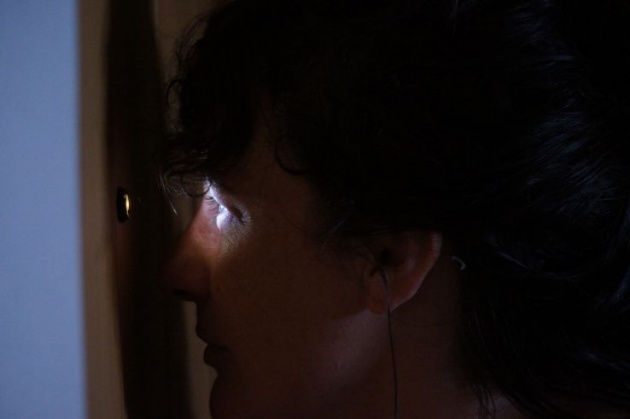
The arms race for eyeballs online has a new weapon: live video streaming, a la Meerkat and Periscope.
This type of content is innately ephemeral. Blink and you’ll miss the stream. It absolutely demands you break away and gawp RIGHT NOW. It monopolizes your attention given its fleeting duration.
Plus you don’t know what’s going to happen next — so you must watch to find out. It’s social engineering through the power of FOMO.
Even if you realize you’re able to watch a recording of the stream later on, it’s not the same as joining in live. That’s the difference between drama and video. One is a collective experience shared in real-time; the other has a pause button.
Of course live video streaming services are not new. But their time has arrived. The capable mobile devices are ubiquitously in place, the high speed networks can handle the broadcasts, and our eyeballs have been primed en masse for dynamic vicariousness. We are ready and willing to peer in.
Live video is the fresh red meat flung into the circus arena of massive social services whose audiences have been trained to hunger for content and respond in real time. Whose eyeballs have been primed to be restless — to expect the next fix. Filter-enhanced photo-sharing kept us looking at selfies for the longest long time. But user-generated video streaming offers the promise of a far more tantalizing and dynamic spectacle. Other people’s perspectives in titillating, intimate real-time.
Live video is the new clickbait. A superior form of clickbait that does not need a formulaic headline to tug on the heartstrings via the application of just enough crude intrigue to make it irresistible to the idly curious. These real-time peepholes are far more promising.
Twitter-owned Periscope even holds out the prospect of eyeballs with agency — by allowing viewers to visibly comment in real-time on a stream, giving them the chance to influence the videocaster to reroute the camera to better satiate their curiosity, or elicit a personal reaction or response. In this momentary arena an eyeball is no longer passive; it has the potential to influence what is being seen. It’s a powerful call to participate, not just lean back and consume. Here the viewer can seek to direct the view.
Clickbait has always been a purely commercial concoction. It has one motive: to drive traffic in order to generate revenue. We are made to wonder what the partially covered thing is; we click; we are (momentarily) satisfied by the reveal. And then the cycle begins again. The content itself barely matters, and rarely registers. It’s an exercise in framed titillation atop the promise of crude gratification.
But there are only so many listicles and slideshows and garish headlines groaning with ‘you’ll never believe whats’ before the bait becomes stale. The trick spent. The lure no longer alluring. So now we have freeform live streaming video to tantalize and mesmerize. Fresh curiosity-piquing prospects dangled in front of our eyeballs, enticing us to click afresh.
Better still, this is crowd-created clickbait. Intended to generate curiosity yet which can be created with the minimum of effort — and without recourse to a given formula (crowd-created behaviors, like Periscoping what’s inside your refrigerator, will emerge organically and spontaneously) — because it has being outsourced to anyone with the ability to download an app and push a button. So really to everyone with a smartphone and a data plan.
Any one of those passive eyeballs has the ability to begin spawning this type of viral content and summoning a remote audience of idle eyeballs to watch. All they have to do is hold up their phone and push a button. Less thought than is needed to snap a selfie; less effort than it takes to frame and filter an Instagram photo.
This is content creation without the need to create any content. Clickbait without the need to generate a viral idea. Creativity without having to have a single original thought.
Yes, some live video streams will yield fascinating insights or impressive spectacle. But with the bar to content creation and viewer engagement falling to a bottom-feeding button-pushing low then many of these streams will inevitably lack any forethought or contain anything of value, significance, meaning or intent.
They will be semantically empty; streams of pixels and audio that signify nothing more than the empirical observation that here is time, visibly passing. But the viewer can’t know beforehand whether they’ll see something of worth or nothing at all. So they are encouraged to click and watch and find out.
In the same way that a much older technology, radio, innately fears dead air, online social spaces abhor the stationary and the static. Such stillness suggests service death. So streams of frictionless pixels are the fodder and filler of choice; a more animated and vigorous form of white noise. Necessary because these giant social platforms are nothing without something rushing across them, entertaining all those assembled eyeballs with movement and colour. And creating an impression of purpose in the process.
The content must flow. And so livestreaming is the next natural step for filling the rapacious digital social maw.
Live video reflects us back to ourselves, by intertwining the humans who create with the humans who watch. It’s a lens for our curiosity and a reflected mirror for our vanity. It can show us something or nothing. Either way, for the social services on which these one-button broadcast apps now squat — as parasite or symbiotic extension to stoke our interest lest it dare to flag — live video holds out the lucrative promise of indefatigable spectacle, rolled round and round by the ebb and flow of the capricious crowd.



